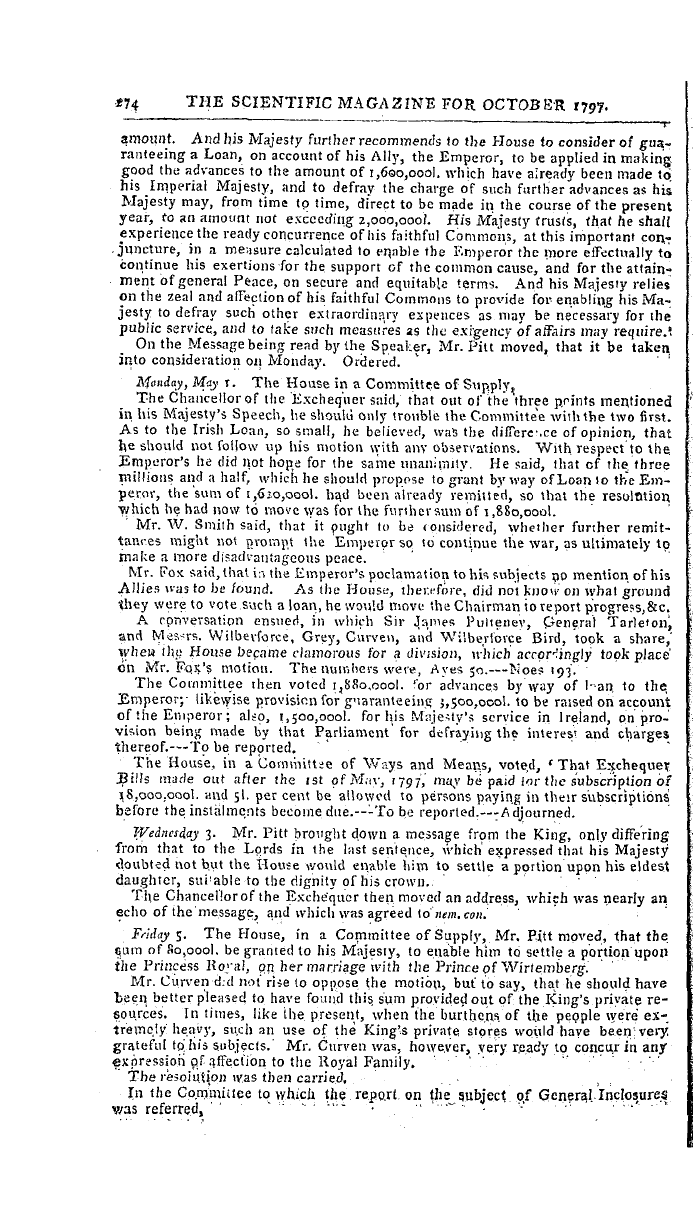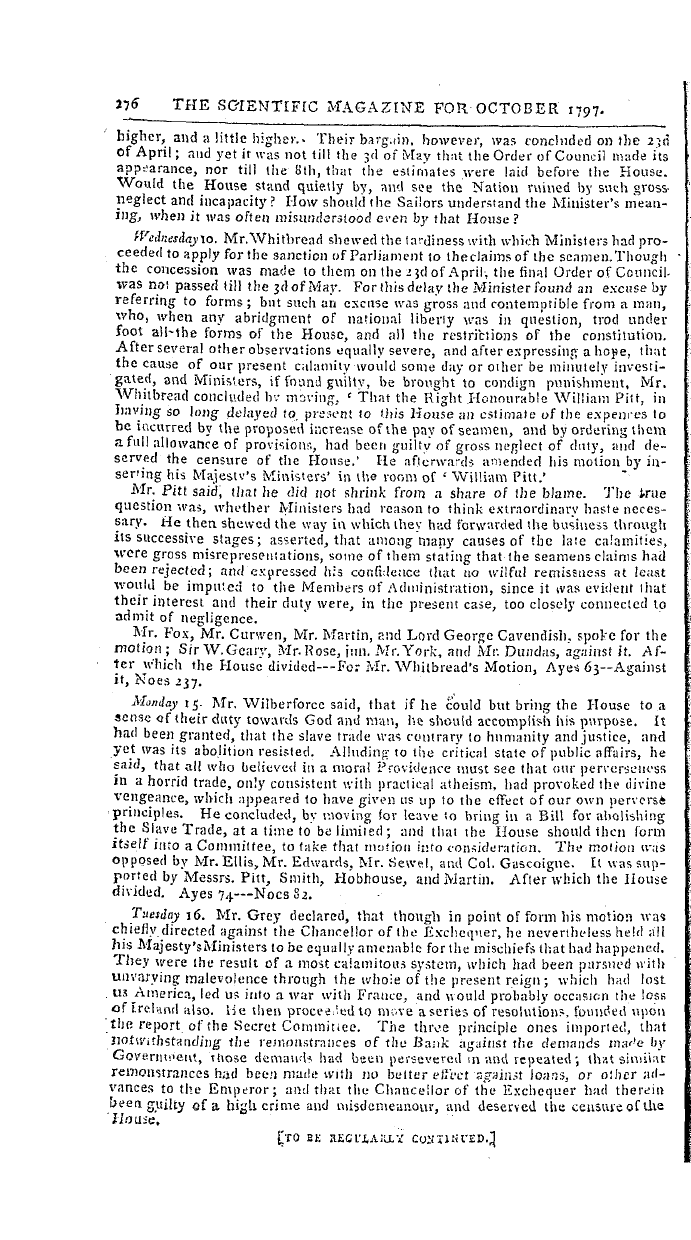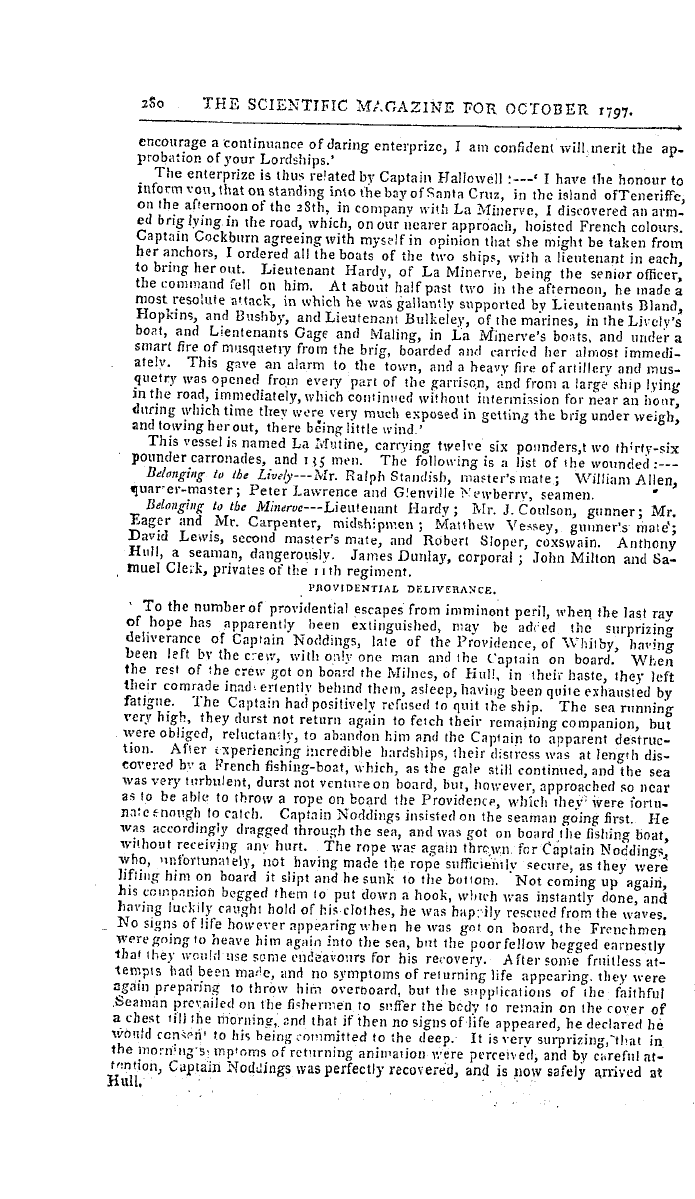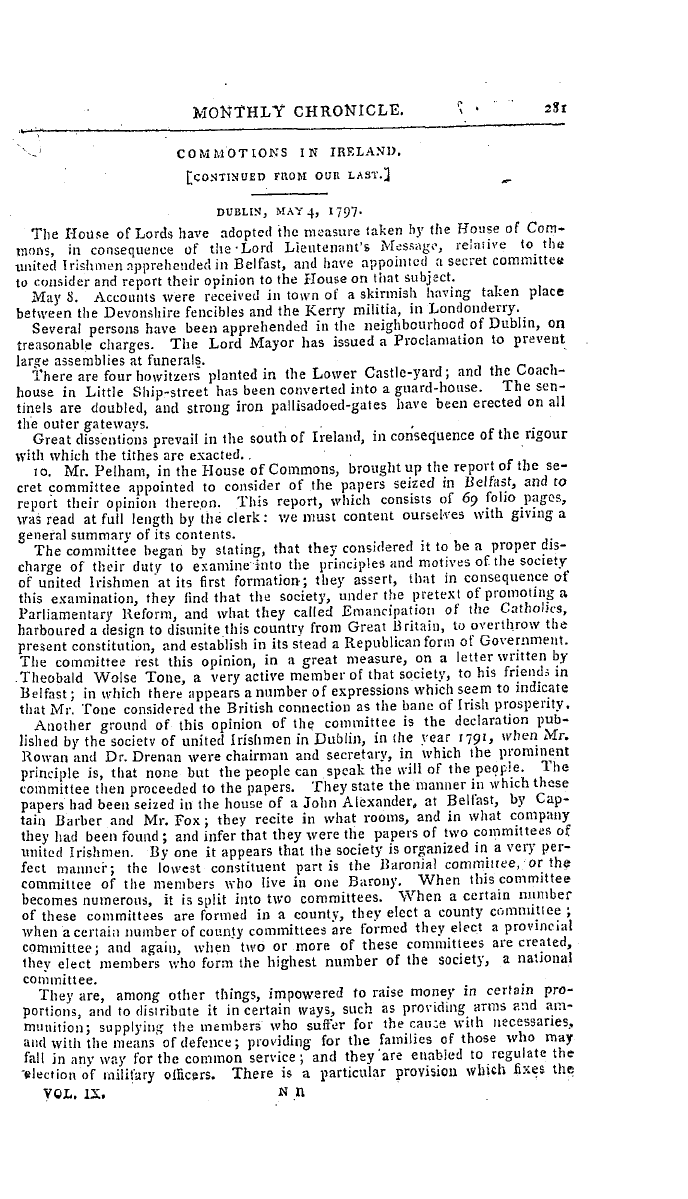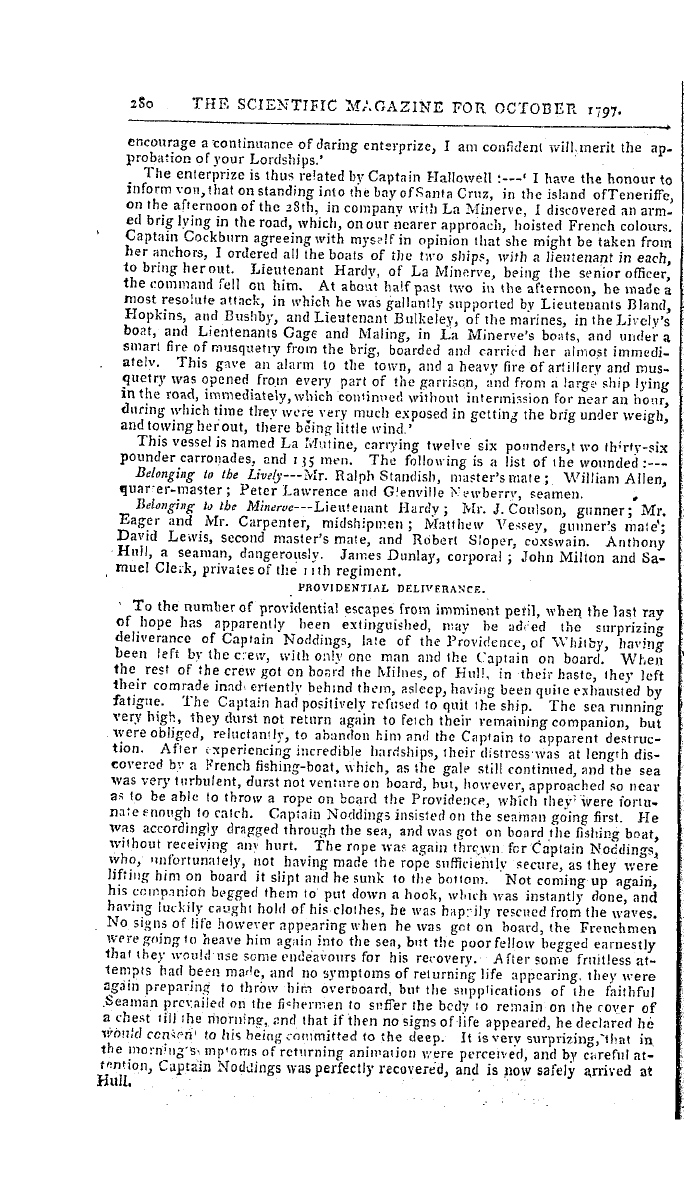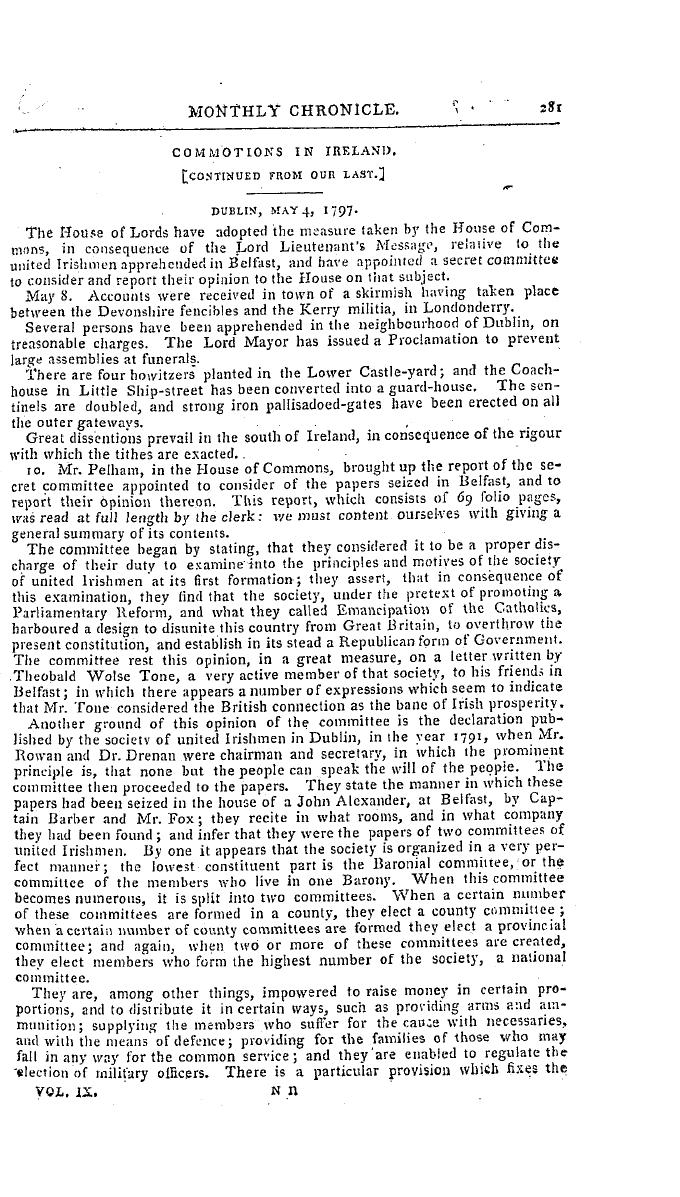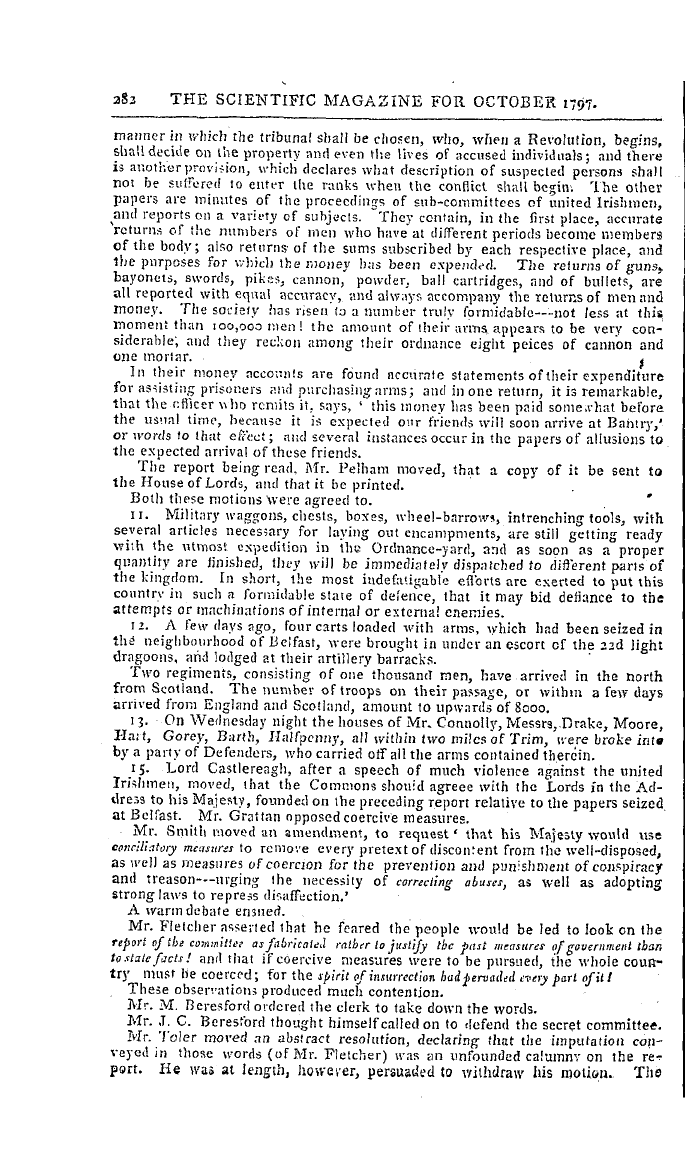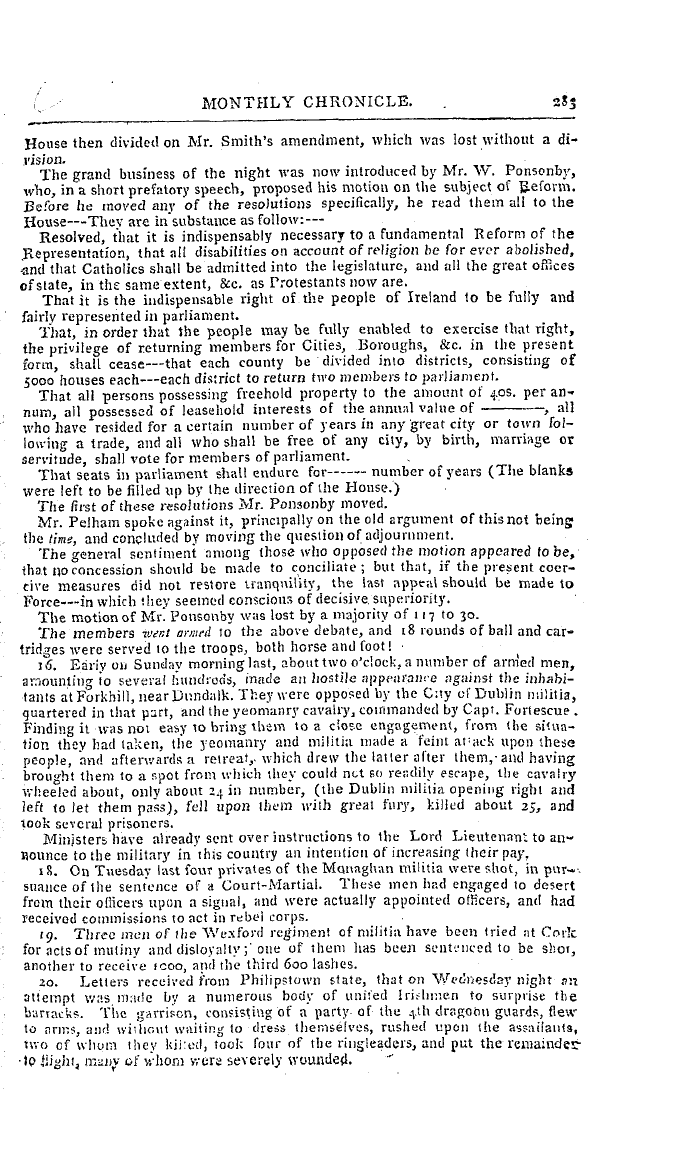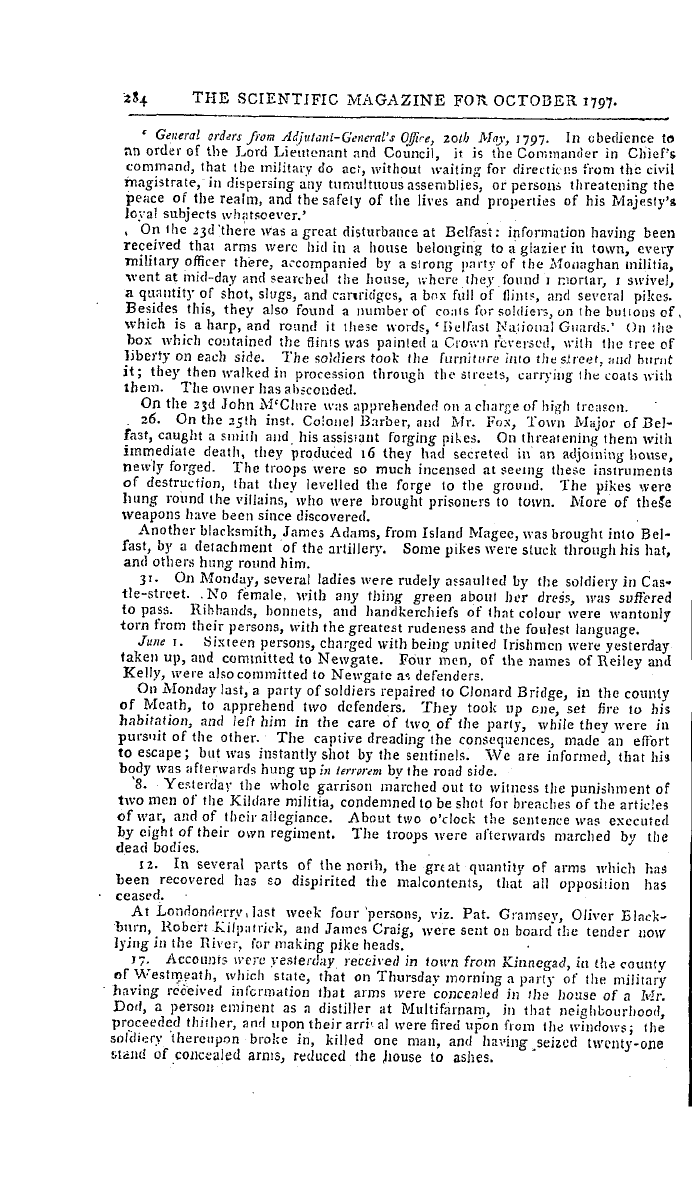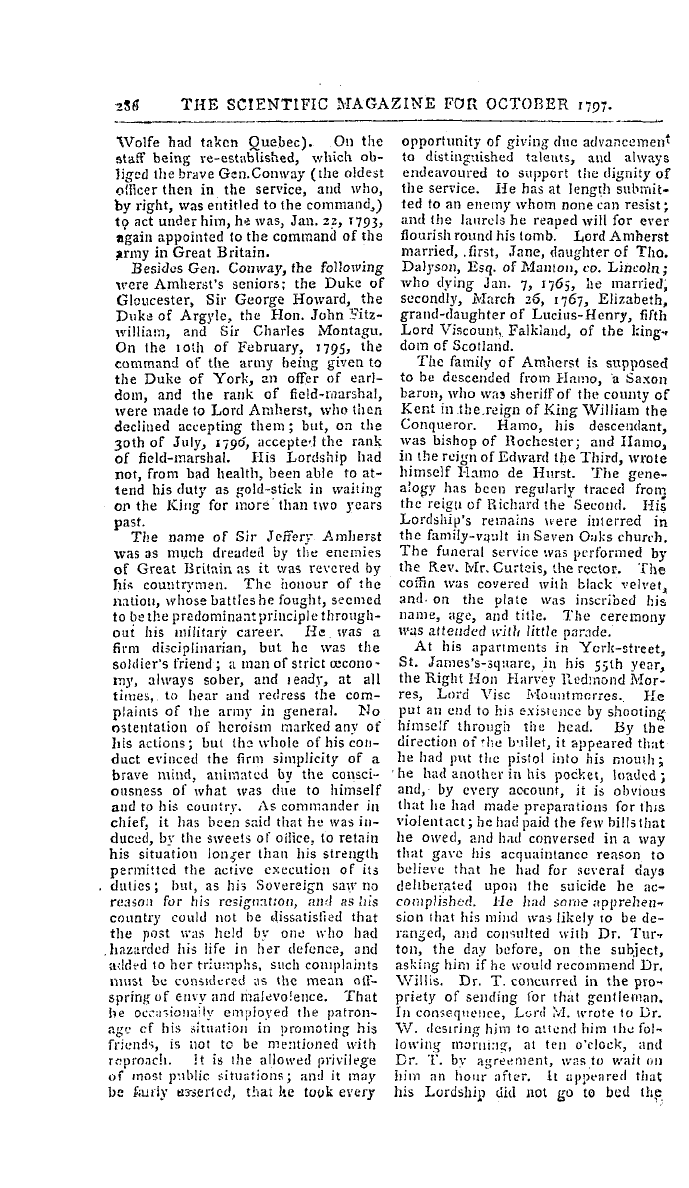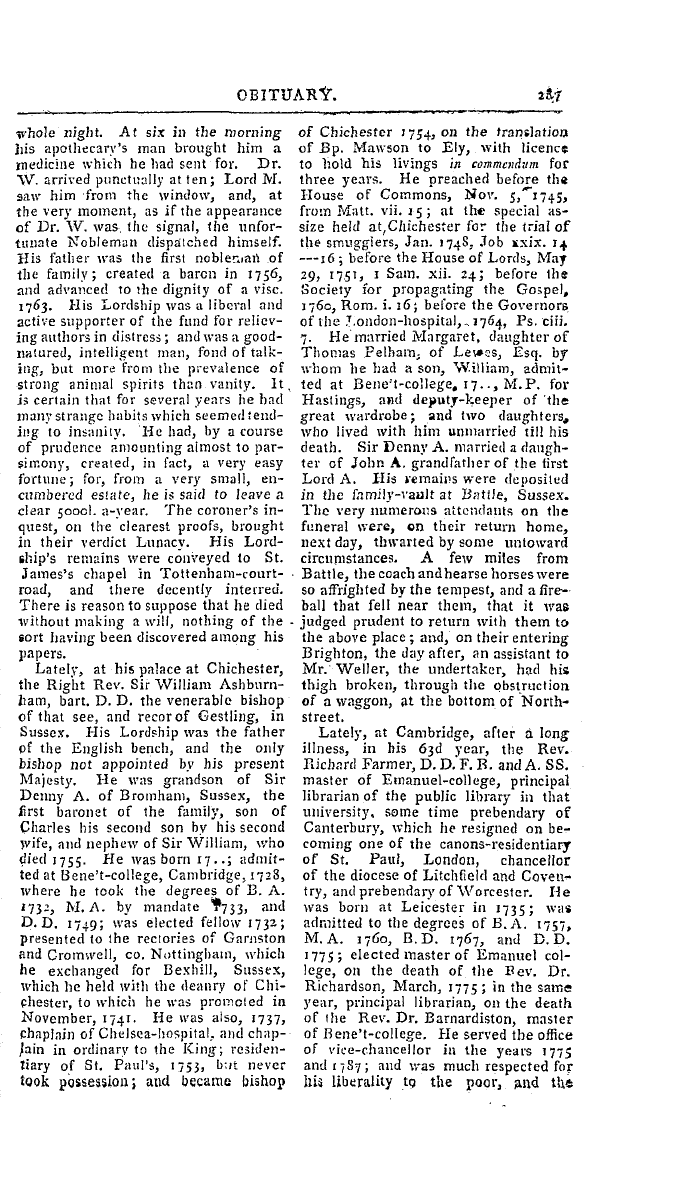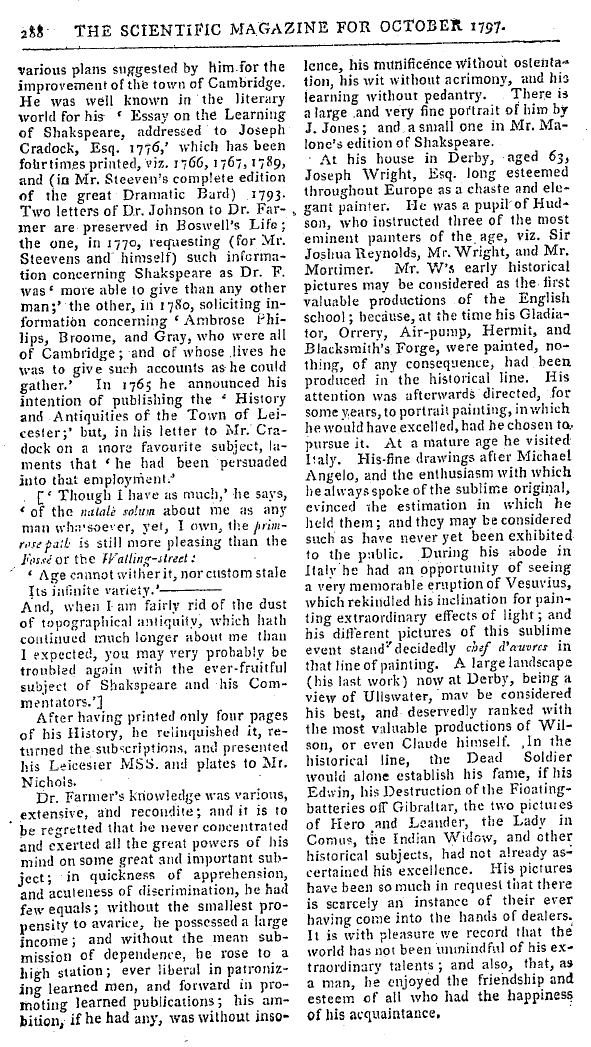-
Articles/Ads
Article HISTORY OF THE SCIENCES FOR 1797. ← Page 2 of 2
Note: This text has been automatically extracted via Optical Character Recognition (OCR) software.
History Of The Sciences For 1797.
streaming from the sun ; and that a comet passing through the solar atmosphere is involved therein , and carries away some of it . But the many disc veries which , since the days of Newton and other famous astronomers , have been made in electricity , having brought us acquainted with an element unknown to former ages , and which shows a vast power through every part of the creation , it became natural to imagine that it must extend into those hiher regions
g which are inaccessible to man . The similarity of the tails of comets to the aurora borealis , which is commonly looked on to be an electrical phenomenon , therefore , suggested an opinion that the tails of comets are streams of electrical matter . The velocity of comets is sometimes inconceivably great . Mr . Brydone observed one at Palermo in July 1770 which in 24 hours
, , described an arch of the heavens upwards of Jo degrees in length ; according to which he supposes that if it was as far distant as the sun , it must have moved at the rate of upwards of 60 millions of miles in a day . The near approach of some comets to the sun subjects them to intense degrees of heat . Sir Isaac Newton calculated that lhe heat of the
comet in 1680 must have been near two thousand times as great as . that of red hot iron . Dr . Long , however , observes that' the comet in question certainly acquired a prodigious heat ; but I cannot think it came up to what the calculation makes it ; the effect of the strongest burning glass that has ever been made use of was the vitrification of most bodies placed in its focus . What would be the effect of a
still greater heat we can only conjecture * , it would , perhaps , so disunite the parts as to make rhem fly off every way in atoms . This , comet , according to Halley , in passing through its southern node , dame within the length of the sun ' s semi-diameter of the orbit of the earth . Had the earth then been in the part of her orbit nearest to that node , their mutual gravitation must have caused a change in the plane of the orbit of the earthand in the length of our year : he
, adds , that if so large a body , with so rapid a motion as that of this comet , were to strike against the earth , a thing by no means impossible , the shock mi g ht reduce this beautiful frame to its original chaos . ' Mr . Whiston attributed the universal deluge to the near approach of a comet . He thought that the earth passing through the
atmosphere of the comet , attracted from it great part of the water of the flood ; that the nearness of the comet raised a great tide in the subterraneous waters , so that the outer crust of the earth was changed from a spherical to an oval figure ; that this could not be done without makh . g fissures and cracks in it , through which the waters ' forced themselves , by the hollow of the earth being changed into a
a less capacious form ; that with the water thus forced upon the surfice of the earth , much slime or mud would arise , which , with the grosser part of the comet ' s atmosphere , would , after the subsiding of tlie water , partly into the fissures and partly into the lower parts of the earth , to form the sea , cover all over , to a considerable depth , the antediluvian earth . [ TO BE CONTINUED . ]
Note: This text has been automatically extracted via Optical Character Recognition (OCR) software.
History Of The Sciences For 1797.
streaming from the sun ; and that a comet passing through the solar atmosphere is involved therein , and carries away some of it . But the many disc veries which , since the days of Newton and other famous astronomers , have been made in electricity , having brought us acquainted with an element unknown to former ages , and which shows a vast power through every part of the creation , it became natural to imagine that it must extend into those hiher regions
g which are inaccessible to man . The similarity of the tails of comets to the aurora borealis , which is commonly looked on to be an electrical phenomenon , therefore , suggested an opinion that the tails of comets are streams of electrical matter . The velocity of comets is sometimes inconceivably great . Mr . Brydone observed one at Palermo in July 1770 which in 24 hours
, , described an arch of the heavens upwards of Jo degrees in length ; according to which he supposes that if it was as far distant as the sun , it must have moved at the rate of upwards of 60 millions of miles in a day . The near approach of some comets to the sun subjects them to intense degrees of heat . Sir Isaac Newton calculated that lhe heat of the
comet in 1680 must have been near two thousand times as great as . that of red hot iron . Dr . Long , however , observes that' the comet in question certainly acquired a prodigious heat ; but I cannot think it came up to what the calculation makes it ; the effect of the strongest burning glass that has ever been made use of was the vitrification of most bodies placed in its focus . What would be the effect of a
still greater heat we can only conjecture * , it would , perhaps , so disunite the parts as to make rhem fly off every way in atoms . This , comet , according to Halley , in passing through its southern node , dame within the length of the sun ' s semi-diameter of the orbit of the earth . Had the earth then been in the part of her orbit nearest to that node , their mutual gravitation must have caused a change in the plane of the orbit of the earthand in the length of our year : he
, adds , that if so large a body , with so rapid a motion as that of this comet , were to strike against the earth , a thing by no means impossible , the shock mi g ht reduce this beautiful frame to its original chaos . ' Mr . Whiston attributed the universal deluge to the near approach of a comet . He thought that the earth passing through the
atmosphere of the comet , attracted from it great part of the water of the flood ; that the nearness of the comet raised a great tide in the subterraneous waters , so that the outer crust of the earth was changed from a spherical to an oval figure ; that this could not be done without makh . g fissures and cracks in it , through which the waters ' forced themselves , by the hollow of the earth being changed into a
a less capacious form ; that with the water thus forced upon the surfice of the earth , much slime or mud would arise , which , with the grosser part of the comet ' s atmosphere , would , after the subsiding of tlie water , partly into the fissures and partly into the lower parts of the earth , to form the sea , cover all over , to a considerable depth , the antediluvian earth . [ TO BE CONTINUED . ]


























































